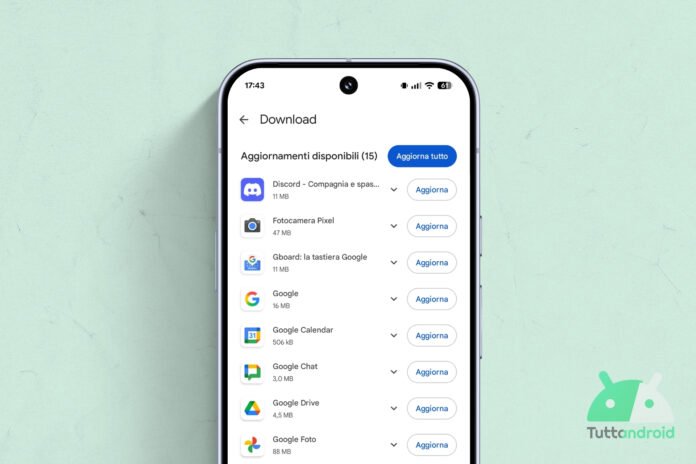With Android 16Google has introduced a long series of innovations especially under the hood. Among these there is one that is concerned with making the installation of application updates much faster and more efficient.
Let’s find out all the details of this news, called Seamless app updatesand what benefits it actually brings to users.
Discovering “Seamless app updates”, one of the new features of Android 16
When we update an app on Android, the operating system “blocks” it and prevents its execution to avoid problems in accessing code and/or resources that are undergoing changes due to the update.
The time required to update an app varies from a few moments to several seconds, depending on the size of the update itself and depending on the complexity of the app, and consequently blocks the use of an app (and access to its resources by others) for a certain period.
Google has however tried to improve the installation process and has done so with Android 16, introducing a new feature called Seamless app updatesdescribed as follows in the release notes:
When a package is updated, it is stopped and placed in a blocking state to prevent it from running while code and resources are modified. For large, complex, and system-critical apps, placing packages in a blocked state can result in a poor user experience, as dependent apps may not run.
Android 16 reduces the time an app is unexecutable by moving dexopt or dex2oat to an earlier stage in the installation process. This change reduces an app’s blocking time from a maximum of seconds to tens of milliseconds.
What does this feature do in a nutshell?
The ultimate goal of Seamless app updates is that of reduce the time an app hangs during the update processwith an improvement that will be more evident for large, complex or system-critical apps (i.e. those that historically take longer to update).
As explained in the release notes, Google has changed the execution of scripts dexopt And dex2oat of Android (fundamental part of the operating system’s AOD compilation mechanism), moving the two scripts to an earlier phase (compared to the past) of the installation process: previously they were executed during the “blocking” period of the app, now they are executed before the app is blocked (and consequently reduce the time in which the app is blocked and inaccessible).
The functionality Seamless app updates of Android 16 is very useful, for example, when we update apps via the Google Play Store: for over a year, the default store (of Android devices equipped with Google Play Services) supports simultaneous app updates, thus reducing the time needed to install all available updates.

